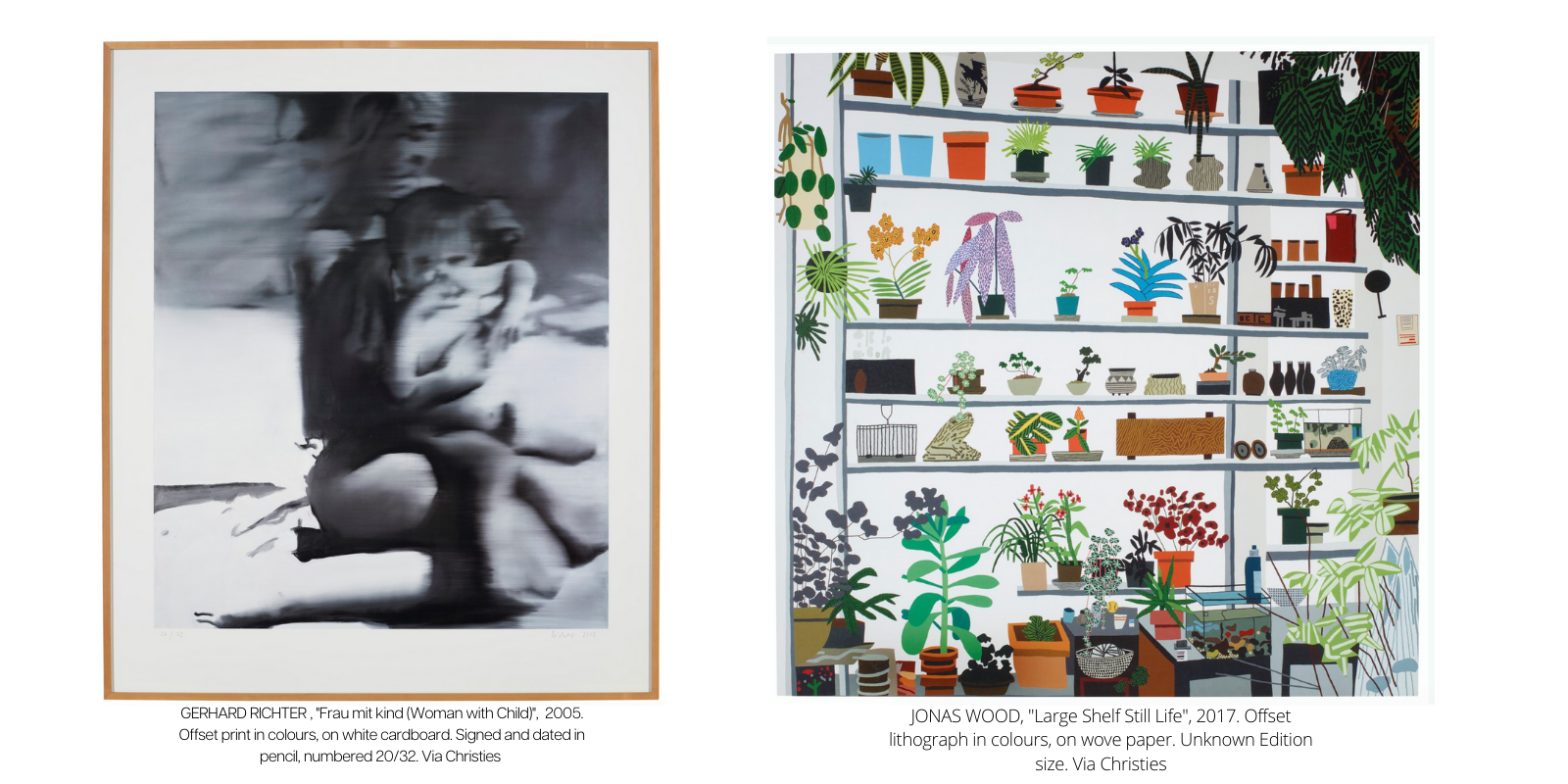Art Explained : Offset (Lithography) Prints
Offset printing (lithography)
Offset printing is a specialized method of printing used primarily for creating lithographs. Lithography itself is a unique process that relies on a greasy substance to transfer an image onto a new surface—typically paper—from an engraved flat stone or metal plate. This traditional method, dating back to the late 18th century, has been revered for its ability to produce high-quality, detailed images with rich tonal variations. Lithography’s versatility has made it a popular choice for artists and printers alike, allowing for both mass production and the creation of limited-edition art prints.
An offset print refers to using an ‘intermediate surface’ (often a rubber-made cylinder) between the original plate (the ‘main surface’) and the ‘final surface’ (e.g., paper, wood, fabric) that the image is ultimately printed onto. In essence, when you purchase an offset print, you are buying a print of a print rather than a direct print from the original plate. This might sound somewhat removed from the original artwork, but there are important reasons behind this technique. The use of an intermediate surface in the printing process has significant implications for the quality, durability, and fidelity of the final product.
How and why does offset printing work?
The technique of offset printing serves two main purposes: it protects the original plate and reverses the image to ensure accurate reproduction. The first purpose, protecting the original plate, is crucial because lithography plates can be delicate. Transferring the engraved design from the original plate onto the rubber cylinder, which then becomes the printing surface, prevents overuse and wear of the original plate. This not only prolongs the life of the plate but also maintains the sharpness and clarity of the image across multiple prints. Since the original plate is less directly involved in the final printing process, it remains in better condition, allowing it to be used for more prints if necessary, or to be preserved as an artifact of the artistic process.
Furthermore, the second purpose of offset printing is to address the reversal of the image. When printing directly from the original plate, the image printed on the paper will be a mirror image of what’s on the plate. This reversed image would not accurately represent the original artwork being copied, which could be problematic for text or any specific directional elements within the image. To visualize this, think of it like a mirror: your reflection shows a reversed version of yourself. If you were to make a print directly from the plate without using an offset technique, the resulting image would similarly be reversed, with right and left sides flipped. The offset printing process corrects this by first transferring the image to the intermediate surface, which picks up the reversed image. When this intermediate surface is then used to print onto the final surface, the image is reversed once more, resulting in a print that correctly matches the original artwork. This process ensures that the final image is true to the artist’s original vision, maintaining both aesthetic and conceptual integrity.

Are ‘Offset prints’ less valuable than a conventional ‘Fine Art Print’ because they are not from the original plate?
The value of offset prints compared to conventional‘Fine Art Print’ is a nuanced topic. On one hand, the fact that the final print has less direct contact with the original plate might suggest a lower value, as it has had less interaction with the artist’s hand, and the tangible connection to the original artwork is somewhat diminished. Collectors often place significant value on the directness of this connection, especially in the world of fine art where the artist’s touch is considered paramount.
However, this does not automatically make offset prints less valuable. The scarcity of the edition plays a crucial role in determining the value of a lithograph. A limited-edition offset print can still command high prices, especially if it is part of a small run or if it carries other markers of value, such as a signature or a low edition number. Additionally, the quality of the print and the reputation of the artist can also elevate the worth of an offset print. In many cases, offset prints are produced with high precision and care, ensuring that the final image is as close to the original as possible, both in detail and in color accuracy.
For collectors, the key is to weigh these factors carefully. While an offset print may not have the same level of direct artistic contact as a conventional fine art print, it can still be a valuable addition to a collection, especially if it is rare or represents an important piece of an artist’s oeuvre. It’s important to remember that the investment potential of lithographs lies not just in the printing method but in the broader context of the work—its rarity, the artist’s significance, and the demand within the market. When considered thoughtfully, offset prints can offer a compelling blend of artistic and financial value, making them a worthy consideration for collectors looking to diversify their portfolios.











